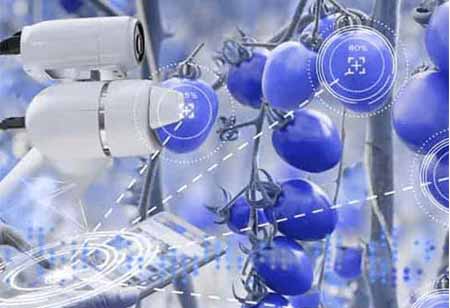Thank you for Subscribing to Agri Business Review Weekly Brief
Advantage Of CRISPR To Design Supreme Foods.
Browning in plants is similar to swelling in humans. When we are injured or sick, we swell up.

By
Agri Business Review | Wednesday, August 03, 2022
Stay ahead of the industry with exclusive feature stories on the top companies, expert insights and the latest news delivered straight to your inbox. Subscribe today.
Scientists are now employing a pioneering technology called CRISPR to edit a plant's genes, conducting a host of new crop features that directly advantage consumers.
FREMONT, CA: Browning in plants is similar to swelling in humans. When we are injured or sick, we swell up. While plants are cut, dropped, munched because of insects, or infected, they brown. Browning helps the plant withstand further attacks or infection, but as with any uncontrolled swelling, there are consequences. Tissue dies.
Browning is largely caused by polyphenol oxidase (PPO) genes. The scientists at Penn State employed CRISPR to turn off a PPO gene in mushrooms. Before, a different approach was utilized to inactivate PPO genes in apples and potatoes.
Non-browning apples, potatoes and mushrooms still rot finally. They simply do not brown. That implies they are less likely to become damaged during shipping or harvest and will keep extended on store shelves and home refrigerators, which can help handle the huge food waste problem.
Non-browning mushrooms, apples and potatoes are just the openings. In addition, injury & infection activate PPO genes in tomatoes, pineapples, wheat, pears, grapes, cherries, cucumbers, mangos and more, making them all potential candidates for gene editing fixes to reduce bruising.
HYPOALLERGENIC WHEAT AND NUTS
Proteins like gluten typically cause allergens. So, theoretically, scientists could use CRISPR to turn off the genes that give rise to allergenic proteins.
For numerous allergenic plants, there are dozens of genes responsible for allergies. For example, to make wheat safe for people with Coeliac disease, scientists would have to turn off 45 genes. Instead, scientists have managed to take out 35 of them using CRISPR.
Before the CRISPR revolution, older genetic engineering methods were used to progress toward hypoallergenic rice, soybeans, tomatoes, apples, birch trees, carrots and peanuts.
Unluckily, some of the genes that cause allergic reactions are also important for the regular growth of the plant, so banging them out has consequences. In addition, the 13 genes responsible for allergens in peanuts make up a considerable proportion of the peanut's whole protein content. Hence engineering hypoallergenic peanuts will be specifically challenging.
Hypoallergenic foods must be carefully separated from their allergenic counterparts if successfully generated. Unfortunately, it is unlikely that this will ever be executed well enough to give seriously allergic personnel the confidence to let their guard down. But for those with small allergies, CRISPR-edited hypoallergenic foods could provide extremely welcome relief.
HEALTHIER PRODUCE
A crop's nutritional value can be improved in three main ways:
- Rising the activity of genes that produce healthy compounds.
- Turning off genes that generate unhealthy compounds.
- Adding new genes introduces nutrients that do not occur naturally or are not absorbed very well from a given food.
The third approach, biofortification, has largely been the focus of genetic engineers seeking to improve nutrition. Using traditional genetic modification techniques, humanitarian scientists have biofortified crops like rice and cassava with nutrients like vitamin A, iron, folate, and zinc. Projects like these support addressing malnutrition in low-income communities.
Still, nutrient deficiencies are not the only food-related health interest. For example, gene-edited plants could also combat obesity and heart disease.
Rice and other carb-heavy crops include multiple kinds of starches. Some starches are easily digested into sugars. Others, such as amylose, pass through without being digested and work as a dietary fiber. Scientists have already utilized CRISPR to produce high-amylose rice, a healthier option for overweight or diabetic individuals. CRISPR is also employed to produce oils enriched with healthier fat profiles, comprising more omega-3 fatty acids.
Molecules such as the tannins and antioxidants found in dark-colored produce have been connected with heart health and protection against cancer. CRISPR has also been utilized to generate antioxidant-rich purple tomatoes. Even though the health benefits of these compounds are debated, this project demonstrates the potential for using CRISPR to enrich plants with safeguarding molecules.
FORTHCOMING PROSPECTS: SWEETER PEAS, SEEDLESS TOMATOES, GLOWING FLOWERS AND MORE.
Any trait controlled by one or a few genes could be tweaked to create crops with consumer benefits. In some cases, the taste could also be improved. For example, sweetness in peas and bitterness in cucumbers are largely controlled by several genes.
The USDA's decision not to enforce new regulations on CRISPR-edited crops spared the omega-3 refined oils from having to experience six years and almost $50 million worth of testing. With that price tag, just traits that dramatically profited farmers previously could offer to get to market, and sole large companies could afford to develop them. As a result, CRISPR gene-editing in plants could usher in a new era of university-produced food crops with vast consumer benefits.





